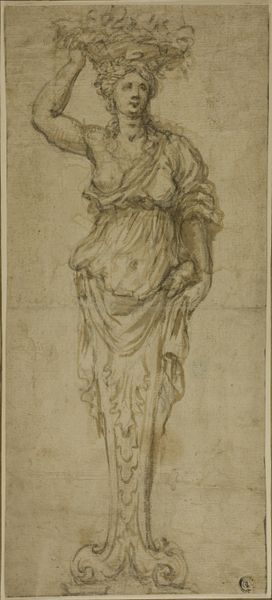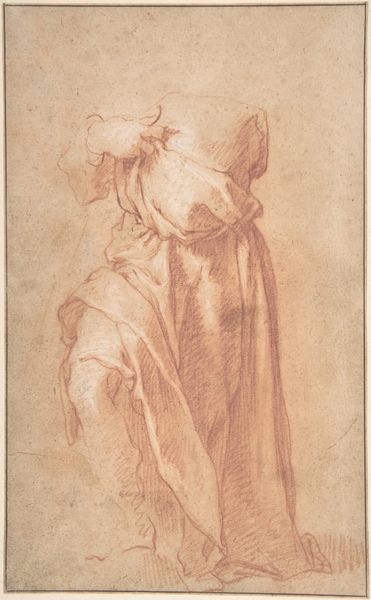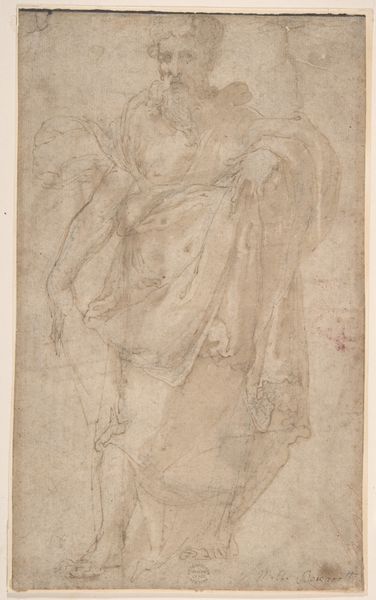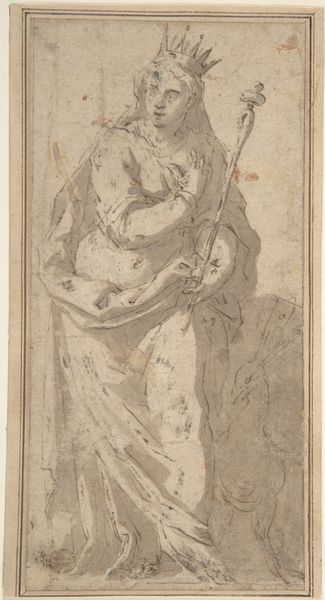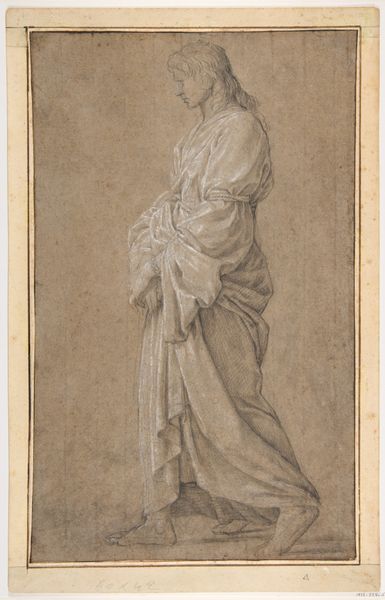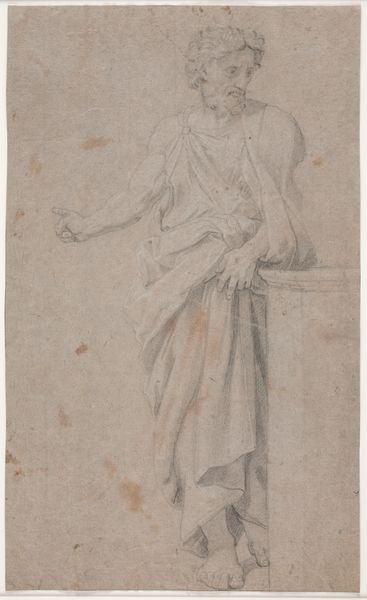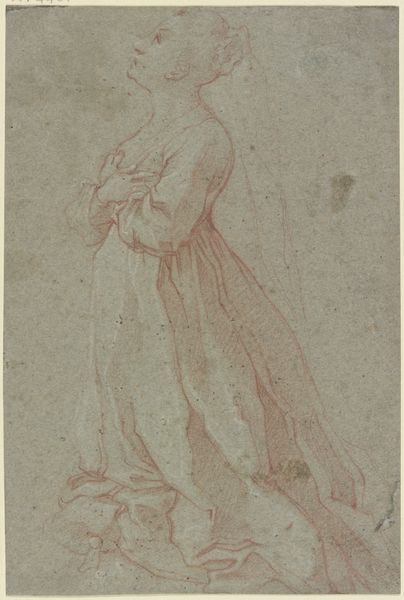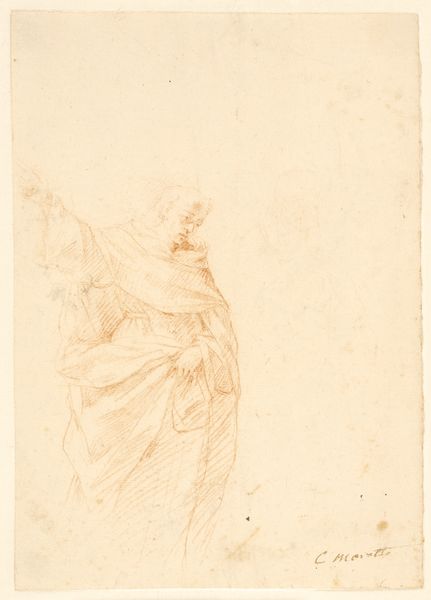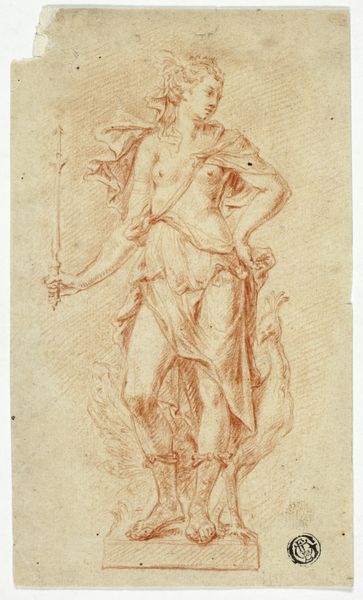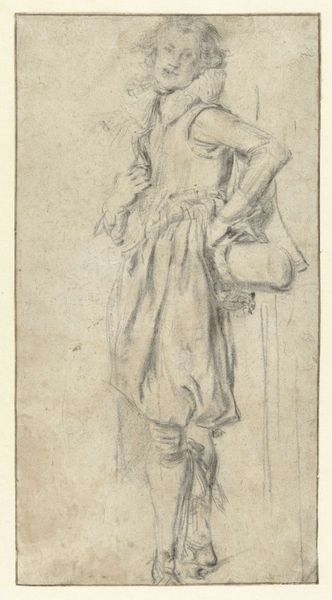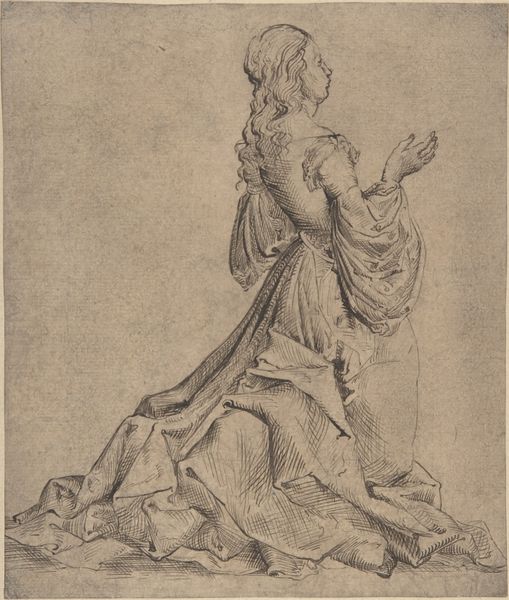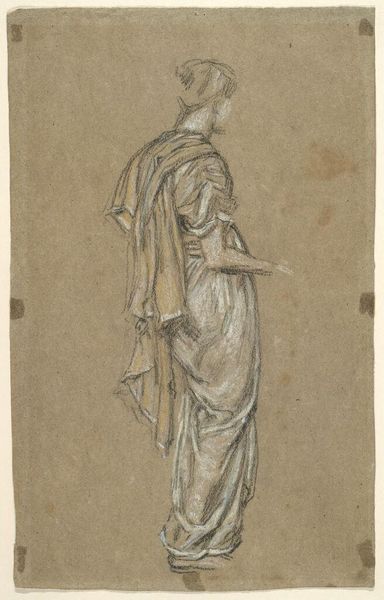
drawing, paper, pencil
#
portrait
#
drawing
#
baroque
#
pencil sketch
#
charcoal drawing
#
figuration
#
paper
#
pencil drawing
#
pencil
#
history-painting
Dimensions: height 172 mm, width 104 mm
Copyright: Rijks Museum: Open Domain
Curator: Here we have a drawing by Cornelis Schut, dating from sometime between 1607 and 1655. It’s titled "Studie voor een standbeeld van Diana," or "Study for a statue of Diana," and is currently held here at the Rijksmuseum. Editor: The delicate rendering really catches the eye. You get a sense of softness, despite the very classical and rigid subject. Diana looks quite stern. Curator: Schut's preparatory work is intriguing because of how it illuminates artistic production. Here, we observe the artist's hand – his testing of lines and composition – as he plans a statue. The material used here, pencil on paper, suggests a readily available and economical process. Editor: Absolutely. The choice to depict Diana is laden with socio-political significance. As the goddess of the hunt, the moon, and wilderness, Diana symbolizes female strength and independence. In a historical context, deploying her image can serve as commentary on societal power dynamics, maybe even hinting at female agency or criticizing restrictive norms. Curator: And we can further speculate on how that commentary could play out depending on the intended audience. Was this design commissioned by a wealthy patron or intended for public display? Those elements will greatly inform the material outcome and contextual meaning. Also, how does this fit into the workshop culture of the era? Editor: It would be fascinating to know where the statue would ultimately stand – in a public square, perhaps, or adorning the garden of an elite household. Its setting would drastically shape its interpretation and impact. How accessible was it to everyday people, and what was the curatorial framework, so to speak? Curator: Precisely. Thinking about it this way opens up a much wider understanding of the statue. The source of the pencils and paper is also worth consideration. Who made them and where? That informs Schut’s social and material position, as well. Editor: These social aspects definitely highlight how dynamic classical imagery can be and how deeply embedded with meaning it is. A brief pencil drawing like this connects us to production networks of both images and physical materials. Curator: It certainly reframes the viewing experience and gives a new appreciation for this work. Editor: It certainly does. I’ll leave here with a sense of wanting to reconsider all statues within their full network of image production and patronage.
Comments
No comments
Be the first to comment and join the conversation on the ultimate creative platform.

